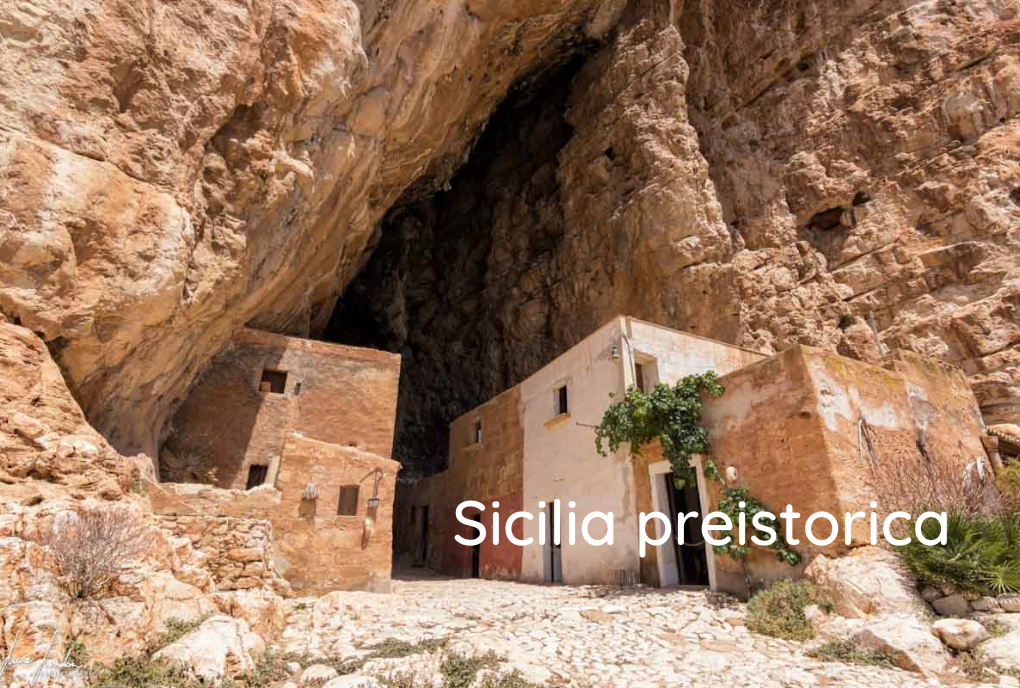
Prehistoric Sicily: journey into the stone age
Getting to know Prehistoric Sicily means getting in touch with an aspect of the Island of the Sun little known to many.
The origins of Sicily’s history, in fact, are told by evidence far older than the period of Magna Graecia and the Baroque. This is considering that the signs of early human settlements are mainly from the Neolithic and Metal Age and are of various kinds. For example, in the rock caves not far from Trapani of great fascination are the prehistoric wall paintings. Just as suggestive is the rock necropolis of Pantalica not far from Syracuse and among the largest prehistoric sites in Europe.
But what makes Prehistoric Sicily truly unique is the integration of the most beautiful ruins of the various archaeological sites within routes intended for trekking and cycling tourism. Combining history, nature and sports, in fact, is definitely an alternative way to visit this wonderful island.
Prehistoric sites in Sicily
By convention, prehistory in Sicily is framed in a time frame from the earliest human attestations on the island to the arrival of the pre-Hellenic peoples (Sicanians, Ausoni, Elymians, Siculi and Morgeti). However, in order to better understand the different testimonies left by early humans, a clarification should be made.
Historians divide the prehistoric period into three ages. Of these, however, thestone age not only indicates the stage when man learned to make tools using stone, wood and bone. Because it is very extensive in time and given the difficulty in clearly defining all chronological phases, by Stone Age scholars mean a stage in the evolutionary process of man.
So, in this journey of discovery of prehistoric Sicily, we will show you all the manifestations related to the Stone Age, describing the pristine places and landscapes where the first inhabitants settled.
Prehistory in southeastern Sicily
Traces of human settlements of Southeastern prehistoric Sicily are already detectable not far north of Syracuse, in the Plain of Targia. Here is the Neolithic village of Stentinello dated to the 5th millennium B. C. The site is characterized by the remains of pile insertions of Sicilian Neolithic buildings and rock-cut burials. Today what remains of this civilization are remnants of pottery with sgraffio decorations of geometric shapes.
Proceeding further north, we find the Magnisi Peninsula near Priolo Gargallo. A destination for fans of trekking, here is one of the most important sites of prehistoric Sicily: the necropolis of Thapsos. Discovered by archaeologist Joseph Voza, the area is divided into three sectors, two of which have cave tombs. Chamber and other types of burials were also found. The entire settlement, however, occupies the entire isthmus area. Evidence of this archaeological site is now preserved at the Regional Archaeological Museum “P. Orsi” of Syracuse. They are mostly part of grave goods, locally made vessels, jewelry and weapons, indicative of how prosperous this civilization was.
Moving inland from Syracuse, the Prehistoric Sicily offers hiking enthusiasts one of the protohistoric sites now a Unesco World Heritage Site: the rocky necropolis of Pantalica. The name of Arabic origin means. caves and connotes the natural-archaeological locality in that it is the largest cave complex in Sicily with more than 5,000 caves used for prehistoric burials.
The site lies on a plateau surrounded by canyons and valleys carved by the course of the two rivers Anapo and Calcinara. This has made the area a destination for lovers of trekking and hydrotrekking, practicable with organized tours. During various excavations, it was found that the entire area was the result of a layering of buildings from different eras. Among other things, this made it possible to identify some areas of major interest such as the necropolis of San Martino. This consists of both graves at tholos prehistoric than from Byzantine catacombs with canopied burials and frescoes. The highest point of the Pantalica site is the so-called acropolis and is home to the Anaktoron, the palace of the prince. This is the only stone building present and is probably the work of Mycenaean builders. If so, this assumption, according to scholars, would call into question the entire anthropological history of Sicily. The other obvious constructions are, however, from the Byzantine period such as the Church of St. Mycidiarius and that of San Nicolicchio.
Even further inland from Syracuse, in the province of Noto, is the last site in southwestern prehistoric Sicily: the village of Castelluccio. It is dated around 2200 BC. C. and is evidence of the earliest forms of organized life on the island.
The excavations carried out during the 1980s by Paolo Orsi, brought to light enclosed tombs and remains of huts but also evidence of later periods such as a Heroon Greek and the castle wanted by Giovanni Landolina.
Among the tombs in the necropolis, noteworthy is the so-called Tomb of the Prince characterized by pillars to subdivide an area in the round. Its architectural complexity makes it one of the highest expressions of monumental prehistoric art of the Bronze Age.
The main prehistoric settlements in western Sicily
La Western prehistoric Sicily is confined to the Palermo area and the Trapani coast. Not far from the capital city, in fact, is the complex of the Addaura Caves. Consisting of three natural cavities, finds made by archaeologists in 1866 and 1952 established that the entire area in the Paleolithic was a small hunter settlement. But what makes this site unique is definitely the presence of Paleolithic graffiti in the so-called Cave of Engravings. Through anthropomorphic and zoomorphic figures, a kind of ritual dance is depicted, one of the oldest in the Western world according to scholars.
Moving toward the Trapani area, at San Vito Lo Capo it is possible to take walks or bicycle rides among the various rock caves that characterize the area. Among the naturalistic attractions in western prehistoric Sicily that are definitely worth mentioning are:
- the Uzzu Cave, immersed in the Zingaro Nature Reserve. Various excavations in the area have uncovered evidence confirming the presence of Homo Sapiens on the Island. Finds such as chipped flints and grave goods are now preserved at the Museum of Natural History in Paris. But what visitors can definitely admire are the fascinating paintings and engravings on the cave walls.
- the Cave of the Horses in Cala Mancina. Its appeal lies in the presence of cave paintings Painted red. They can be distinguished into two distinct groups, one with geometric ellipse and circular signs, the other with more realistic and identifiable figures such as the sun, boat, men, and animals.
- the Mangiapane Cave within the Nature Reserve of Monte Cofano. This is part of the complex of nine Paleolithic caves known as the Caves of Scurati and is named after the family that lived there from 1819 until the early 1900s. The beauty of the site is such that it has also been the location of television productions such as Il Commissario Montalbano and the Rai Màkari series. But what makes this naturalistic beauty truly striking is that it is home every year to the Living Crib of Custonaci now included in the Register of Intangible Heritage of Sicily.
The prehistoric sites of the smaller islands
Some of Sicily’s prehistoric archaeological sites are also found on islands in the archipelagoes. Definitely noteworthy are:
- l’Acropolis of Lipari. The largest of the Aeolian Islands hosts the necropolis of ancient Civita with artifacts from the Neolithic and other periods. Studies by archaeologists, in fact, have confirmed the presence of prehistoric artifacts from different periods such as small stone huts covered with branches and larger dwellings with roofs supported by poles.
- the Genovese Cave. Discovered not far from the township of Levanzo, the site is known for its cave paintings and graffiti from the Paleolithic period. Animals such as oxen and horses and human figures with headdresses are perfectly identified among them.
- i Sesi of Pantelleria. Sixty-five kilometers from Tunisia, the island was a destination for migrations of African peoples more than 5,000 years ago. Settled in the areas of Mursia and Cimillia, megalithic constructions called sesi. There are 57 stone buildings intended for burials and the largest is called the King’s Sese. According to scholars, the deceased were buried with their grave goods and walled in from the outside.
Those listed so far are just a few of the prehistoric wonders found in Sicily. So many, in fact, are the naturalistic-archaeological beauties of the island, so why not discover them perhaps by bicycle or on foot with experienced guides?
by Annapasqua Logrieco
opening photo of: a journey endless emotions





